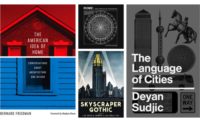Though the movie is called Tall, and it outlines the technological developments that made skyscrapers possible, it is really an aesthetic argument—verbal and, even more, cinematically visual—in favor of the organic over the mechanical, the ornamental versus minimalist, the beautiful rather than the starkly utilitarian, American over European. And much of it, as seems to be this director’s way (his film about elevated subway stations is viewable on YouTube), is just plain visual poetry—with great music, like architectural “videos” set to jazz, Baroque instrumentals, and a string quartet or two.
A landmark in architectural history that the film returns to repeatedly is the World Columbian Exposition of 1893. It was held in Chicago, but New York firms were recruited by architect Daniel Burnham, as director of works, to design most of the buildings (none of them tall). The men are deprecated as European in style, as opposed to Louis Sullivan, who believed in creating an American architectural aesthetic, and who received precisely one commission for the Exposition.
His structure was an arcing burst of twining botanical bas relief in colored terra-cotta amid the classical, “imperial” forms of the “White City”; on Sullivan’s building, the arch occupying most of its square main facade is the emphatic central feature. The effect is almost Chinese, but the “Golden Door” does have two octagonal cupolas, the smaller one topped by a dome that seems as European as any other. Sullivan’s building has a distinct look, and it’s certainly an alluring one, but, while it may be struggling toward an American idiom (as did all the arts in the next half-century), that intention is not self-evident.
Extensive intervals of the architectural music videos pan the endless repeating grids of giant office buildings, here and there inserting shots of the lush traceries of Sullivan facades, often with sparrows or a pigeon sheltering in them as if the foliage represented were natural. It is not quite said explicitly, but the grids are the consequence of founding decisions to go with a version of post-and-beam construction in high-rises, rather than trying the cantilever that Sullivan’s disciple Frank Lloyd Wright eventually espouses. It would have produced buildings of different shapes (see the Mile High tower)—more organic ones, Kirchheimer suggests. Computer-aided design, replete with biomorphic shapes, does not seem to have made for that kind of organicism, however. What those structures are not, and Sullivan’s are—never mind steel frames—is artisanal.
But Kirchheimer more than acknowledges that the real reason we are surrounded by repetitive, joyless grids is that they provide the most square footage for the least money. Despite the Flatiron Building and the Washington, D.C., Mall designed by Burnham, that contemporary of Sullivan’s is cast as the Antichrist, the capitulator to commercial interests, while Sullivan became their victim.
The film portrays Wright, who seemed able to capitalize on his aesthetic convictions for reasonable gain and more than reasonable fame, touchingly looking after his mentor when Sullivan declined into poverty and alcoholism.
But Sullivan was not rejected, the great architecture writer Ada Louise Huxtable is quoted as saying: his aesthetic was, but his science—as a pioneer of the curtain wall—became a legacy that would have been anathema to him, in that triumph of European influence, the International Style.
Manfred Kirchheimer’s 2006 film Tall: The American Skyscraper and Louis Sullivan is screening at the Metrograph theater in Manhattan until February 15.






Post a comment to this article
Report Abusive Comment